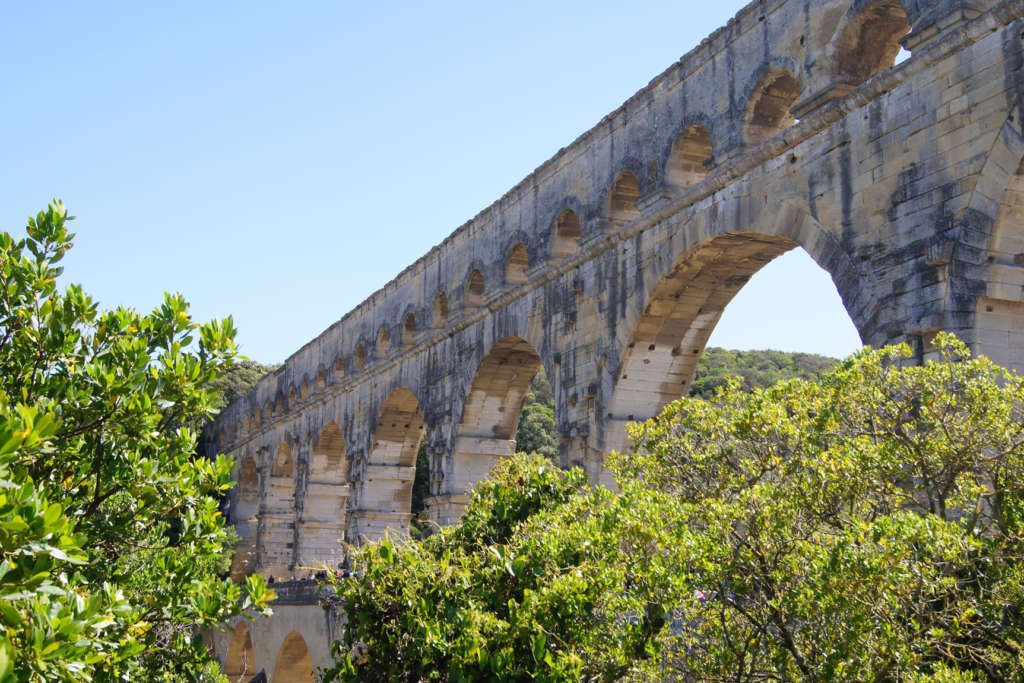Pont du Gard, France – UNESCO world heritage sites

by Noah Patton
France’s Pont du Gard is a relic from the Roman aqueducts used to carry water around the ancient empire. It is the tallest Roman aqueduct bridge in the world and is an excellent state of preservation. It’s historical importance has net it a place in the UNESCO’s World Heritage Sites list since 1985.
To first understand the ingenuity and precision in the Pont du Gard’s design, you have to understand how Roman aqueducts worked. Aqueducts were man-made streams that utilised gravity to bring water from natural springs and reservoirs to destinations. Artificial reservoirs and dams would be created to ensure it would never empty in dry times. The danger with transferring water across large distances is the erosion the water can inflict on the material (typically limestone) used to build these aqueducts. To avoid erosion by the water moving rapidly, scouring the stone, the gradient of the aqueducts had to be very slight. However, if they were too small, the water would stagnate. The aqueduct would eventually reach a city, arriving in the outskirts, storing the water in a castellum. Smaller masonry channels would branch out across the city into pipes that would supply pressurised water to fountains, homes and baths.
The Pont du Gard stands 48.8m tall and 275m long (although it was originally 360m long). Across this distance it descends at a gradient of 1cm per 18,241cm. This level of precision centuries ago was extraordinarily difficult to achieve. In its prime it was estimated to carry 40,000 cubic metres of water a day to the Roman colony of Nemausus (now the city of Nimes in southern France) over 50km away.
After the collapse of the Roman empire, the Pont du Gard fell into disrepair. However after the 6th century it remained intact and in use as a toll bridge. It would be used for centuries by local rulers that received a fee from each traveller that would cross it as a price for their upkeep of the bridge. Despite this, it still did take significant damage in the 17th century where stone blocks were looted. But, in the 18th century it garnered significant attention from tourists and was carefully protected since then. Now it remains one of Frances most popular tourist destinations, and throughout the recent centuries many authors have written of the beauty and power the structure imposes.
Jean-Jacques Rousseau once said, “I had been told to go and see the Pont du Gard; I did not fail to do so. It was the first work of the Romans that I had seen. I expected to see a monument worthy of the hands which had constructed it. This time the object surpassed my expectation, for the only time in my life. Only the Romans could have produced such an effect. The sight of this simple and noble work struck me all the more since it is in the middle of a wilderness where silence and solitude render the object more striking and the admiration more lively; for this so-called bridge was only an aqueduct. One asks oneself what force has transported these enormous stones so far from any quarry, and what brought together the arms of so many thousands of men in a place where none of them live. I wandered about the three storeys of this superb edifice although my respect for it almost kept me from daring to trample it underfoot. The echo of my footsteps under these immense vaults made me imagine that I heard the strong voices of those who had built them. I felt myself lost like an insect in that immensity. While making myself small, I felt an indefinable something that raised up my soul, and I said to myself with a sigh, “Why was I not born a Roman!”

